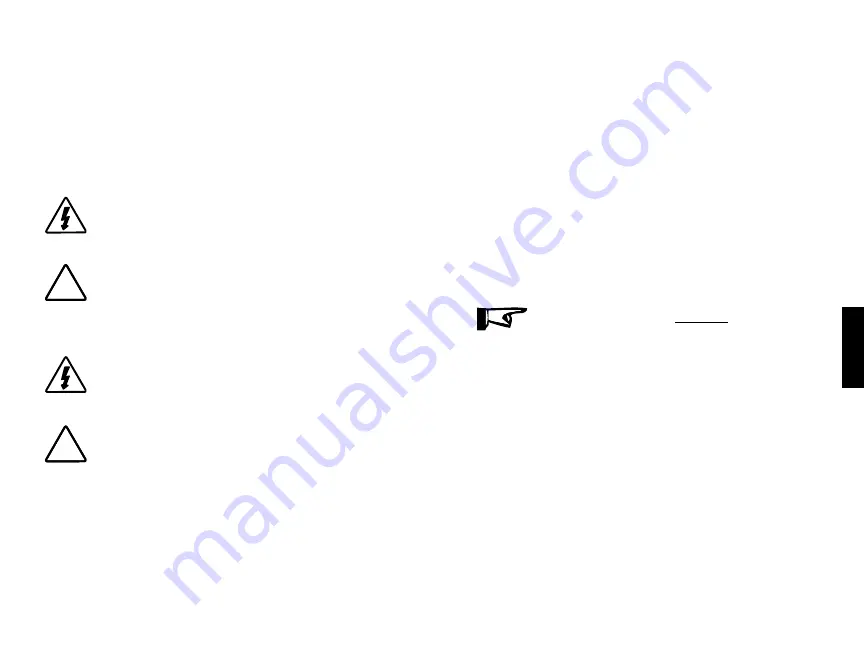
MORNINGSTAR CORPORATION
35
4.0 OPERATION
34
absorption stage for 3 or 4 hours before transitioning to the
float stage.
Equalize (flooded battery type only)
The SunSaver will equalize a flooded battery for three
(3) hours every 28 days. Equalize charging raises the
battery voltage above the standard absorption voltage so
that the electrolyte gases. This process prevents electrolyte
stratification and equalizes the individual cell voltages within
the battery.
WARNING: Risk of Explosion
Equalizing vented batteries produces explosive gases.
The battery bank must be properly ventilated.
!
CAUTION: Equipment Damage
Excessive overcharging and gassing too vigorously
can damage the battery plates and cause shedding of
active material from the plates. An equalization that is
too high or for too long can be damaging. Review the
requirements for the particular battery being used in
your system.
AVERTISSEMENT: Risque d’explosion
Les batteries à évent et compensation produisent des
gaz explosifs. Le groupe de batteries doit être correcte-
ment ventilé.
!
ATTENTION: Endommagement de l’équipement
Une surcharge excessive et un dégagement gazeux
trop vigoureux peuvent endommager les plaques de
batteries et provoquer l’élimination du matériau actif des
plaques. Une compensation trop élevée ou trop longue
peut provoquer des dégâts. Examinez les exigences
pour la batterie particulière utilisée dans votre système.
Dead Battery Charging
The SunSaver has a special charging function to recover
batteries that have discharged too low. If the terminal
voltage of the battery is greater than 1 Volt, the SunSaver
will detect the battery and provide approximately 85%
of available charge current until the battery reaches the
minimum operating voltage of the controller. When the
battery has recharged to the minimum operating voltage of
the SunSaver, 100% of available charge current will flow to
the battery and normal operation will resume.
4.3 Load Control Information
The primary purpose of the load control function is to
disconnect system loads when the battery has discharged
to a low state-of-charge and reconnect system loads when
the battery is sufficiently recharged. System loads may be
lights, pumps, motors, DC appliances, and other electronic
devices. The total current draw of all loads must not exceed
the SunSaver maximum load rating.
NOTE:
Do not wire an AC inverter of any size to the load termi-
nals of the SunSaver. Damage to the load control circuit
may result. Connect inverters directly to the battery or
battery bank.
Load Control Settings
Load control is fully automatic. The load will be
disconnected and reconnected based upon the Low Voltage
Disconnect (LVD) and Low Voltage Reconnect (LVR) voltage
thresholds. The LVD and LVR thresholds are listed in the
back of the manual.
LVD Warning
As the battery discharges the
Battery Status
LEDs will
transition from green to yellow and then from yellow to
flashing red. The flashing red indication is a warning that a
low voltage disconnect event will occur soon. The amount of
time between a green SOC indication and load disconnect
4.0









































